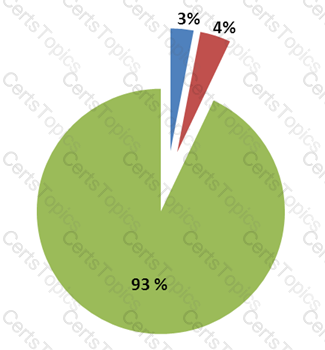Reviews
Consider the following list of statements about audits and management reviews:
I.Audits are usually more effective than management reviews at finding defects
II. Audits and management reviews have the same main goals, the only difference is related to the roles and level of formality
III. A typical outcome of an audit includes observations and recommendations, corrective actions and a pass/fail assessment
IV. An audit is not the appropriate mechanism to use at the code review in order to detect defects prior to dynamic testing
Which of the following statements is true?
Number of correct responses: 1
K21 credit
During the follow-upphase the following conditions are checked:
X1. The code has been completely reviewed
X2. All the identified defects have been correctly fixed and the modified code has been compiled successfully and run through all the static analyzers used by the project without warnings and errors
X3. The modified code is available under the configuration management system with a new version number for the specified CI
If these conditions are fulfilled then the review process terminates.
Which of the following characteristics of a formal review is missing in this description?
Number of correct responses: 1
K21 credit
Improving the Testing Process
Which of the following statements about the TMMi test process improvement model is true?
Number of correct responses: 1
K21 credit
Improving the Testing Process
Which of the following statements about the STEP test process improvement model is true?
Number of correctresponses: 1
K21 credit
After the presentation, you are asked to explain the chart.
Assume you have applied a full risk-based testing strategy.

Which of the following answers would you expect to best describe the pie chart?
Number of correct responses: 1
K43 credits
Test Management
For which of the following activities would the costs be classified as a cost of detection?
Number of correct responses: 1
K21 credit
Test Tools and Automation
Assume you are a Test Manager involved in system testing of a CRM application for a Pay-TV company. Currently the application is able to support a proper number of users assuring the required responsiveness. Since the business is expected to grow, you have been asked to evaluate the ability of the application to grow to support more users while maintaining the same responsiveness.
Which of the following tools would you expect to be the most useful at performing this evaluation?
Number of correct responses: 1
K21 credit
Test Tools and Automation
After a selectionprocess you have selected a test management tool that is going be introduced in your organization and used by your test team in a pilot project.
You have already identified the member of your test team who will be the administrator of the tool, since he/she has a significant experience with the administration of test management tools and so he/she is able to make effective and efficient up-front decisions about "how" the tool will be used. You have also developed a training plan for the other members of your test team.
In collaboration with the administrator of the tool you have also devised standard ways of managing, storing and maintaining the tool and its assets including backup/restore procedures.
You have also analyzed standard formats supported by the tool (CSV, XLS, XML, etc.) to export, import and archive all the information managed by the tool itself (requirements, test case specifications, test plans etc.) for compliance with the most important test management tools, in order to minimize the impacts of migrating this information to a new tool that could replace the existing one in the future.
Which of the following phases in the lifecycle of the new tool has NOT been adequately considered in this description?
Number of correct responses: 1
K21 credit
You are following a risk-based testing strategy. The test execution time is very limited. Assume that all the product risk items require moreor less the same level of test effort.

Which of the following answers describes the best execution schedule in this scenario?
Number of correct responses: 1
K33 credits